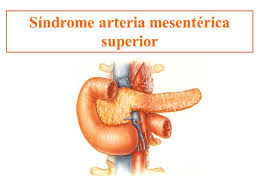Laparoscopic duodenojejunostomy for treatment of Wilkie’s syndrome
AIMS
Wilkie’s syndrome is a rare condition (0.2%) that results from an intestinal obstruction due to compression of the third part of the duodenum between the abdominal aorta and superior mesenteric artery. Is most common in adolescents and young adults, especially women (2:1). Symptoms are nonspecific and may include postprandial epigastric pain, bloating, early satiety, nausea and vomiting. The pain is alleviated in the knee–chest position and in left lateral decubitus. CTA (Computed Tomography Angiography) and MRI (Magnetic Resonance Imaging) have shown greater sensitivity for diagnosis. Surgery is indicated if conservative management fails, in large evolution disease with significant weight loss and progressive duodenal dilatation or after complications such as peptic ulcer secondary to obstruction.
METHODS
We report the case of a 31-year-old woman who presented postprandial epigastric abdominal pain and abundant vomits for several years. She had not any significant prior medical history. The diagnosis of Wilkie’s syndrome was made by gastrointestinal transit and multidetector computer tomographic angiography, showed duodenal obstruction caused by superior mesenteric artery compression on 3rd part of duodenum.
The patient was operated on laparoscopically using four trocars, three of 12 mm and one of 5 mm. Neumoperitoneum was created with Veress needle in lthe left hypochondrium. Mechanical laterolateral duodenojejunostomy between the second and third parts of the duodenum and the first jejunum loop was made, with a 45 mm linear endostapler (white load) and Stratafix™.
RESULTS
The postoperative period was uneventful, and the patient was discharged on the third day post-op with normal digestive tolerance. With a follow-up of one year, the patient is asymptomatic and with an adequate oral intake and the gastrointestinal transit shows appropriate passage of the contrast through the duodenojejunostomy.
CONCLUSION
When surgery is indicated in wilkie syndrome, performing a laparoscopic duodenojejunostomy is a good option with favorable results.

 Español
Español English
English